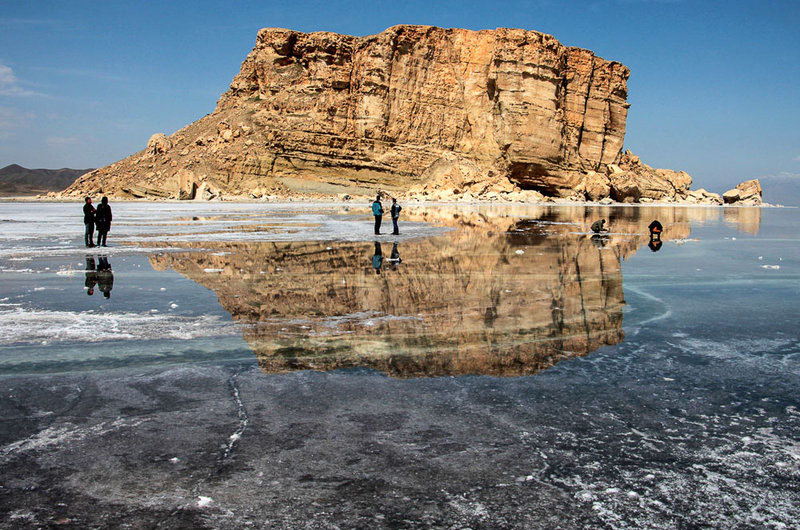Budget deficit could delay Lake Urmia’s revival: environment chief

TEHRAN — Lake Urmia is already saved from total dryness, however, budget deficit might postpone the lake’s full restoration, the chief of the Department of Environment said on Monday.
“Currently full restoration of the lake depends on the budget the government allocates to the revival projects,” Isa Kalantari said during his first press conference after taking on the position. “The effective measures needed to be taken to restore the lake are clear, but the later the budget is allocated the longer it takes the lake to fully revive.”
Full restoration of the lake requires an annual budget of 20 trillion rials (nearly $500 million), Kalantari said, regretting, “right now we are short of some 17 trillion rials (nearly $425 million) per annum.”
Kalantari who is also the head of Lake Urmia restoration program explained that so far some 25 trillion rials (nearly $625 million) is spent on lake restoration projects and some additional 200 trillion rials (nearly $5 billion) is required to bring the lake back to its’ former glory.
In 1997 the volume of water at the lake measured at 30 billion cubic meters which dramatically decreased to half a billion cubic meters in 2013 and again rose to 2.5 billion cubic meters in 2017, Lewis explained showing a table to the conference.
With a surface area of approximately 5,200 square kilometers, Lake Urmia in northwest Iran, was once the largest lake in the Middle East and the sixth-largest saltwater lake on Earth, but is facing a dramatic decline for some years now.
Old and inefficient irrigation methods, depleting ground water resources within the lake watershed, long periods of drought, damming rivers which were supposed to flow into the lake and on top of that mismanagement and inappropriate measures intensified the lake’s status over time.
The lake which was a major tourist attraction and a home to hundreds of thousands of migratory birds has shrunk substantially. In 1997 the volume of water at the lake measured at 30 billion cubic meters which dramatically decreased to half a billion cubic meters in 2013 and while the lake had a surface area of 5,000 square kilometers in 1997 the surface shrunk to one tenth of that to 500 square kilometers in 2013.
However by planning restoration programs the volume of water rose to 2.5 billion cubic meters in 2017 and the surface area has now restored to almost half of the original amount measuring at 2,300 square kilometers.
MQ/MG
